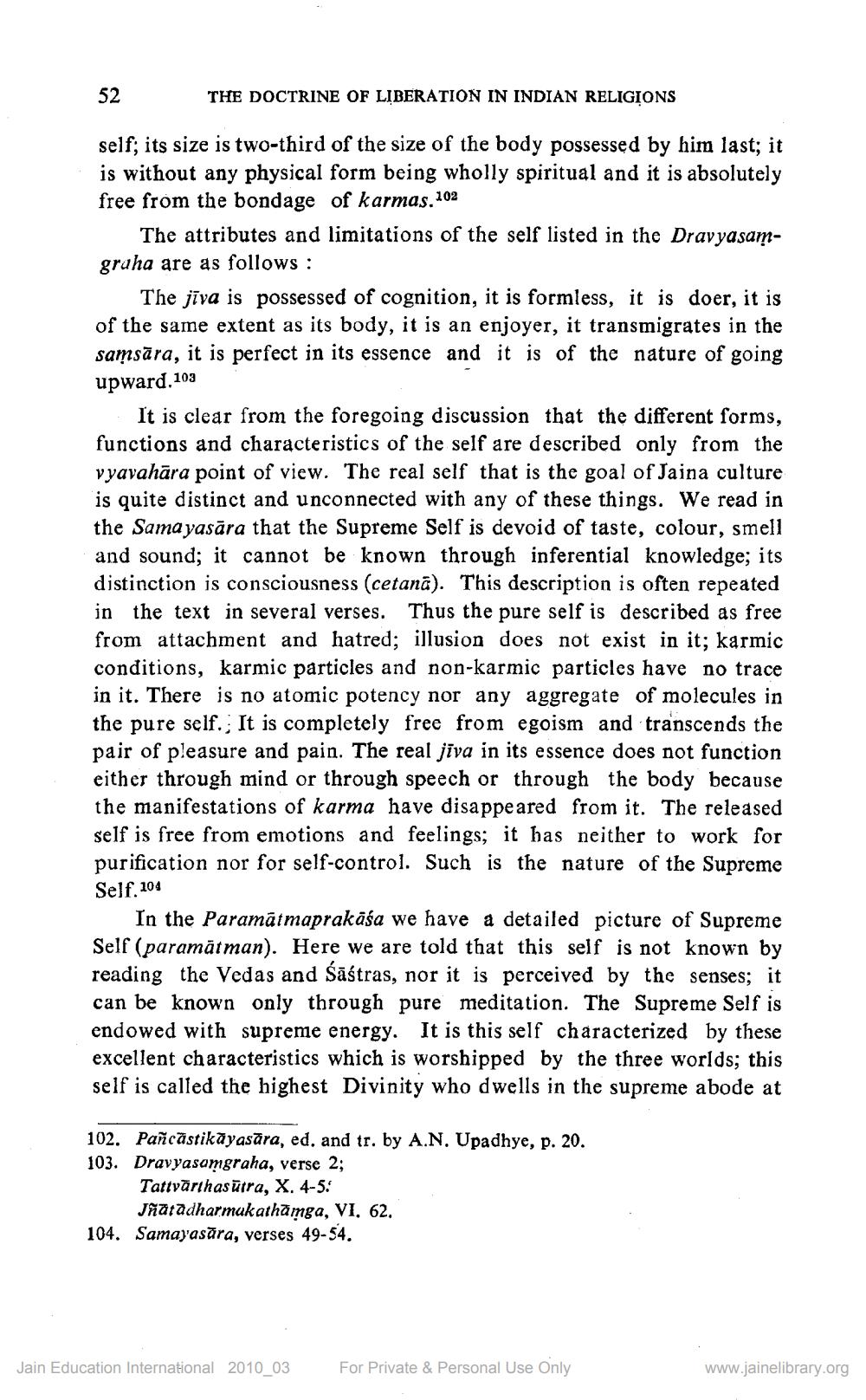________________
52
THE DOCTRINE OF LIBERATION IN INDIAN RELIGIONS
self; its size is two-third of the size of the body possessed by him last; it is without any physical form being wholly spiritual and it is absolutely free from the bondage of karmas. 102
The attributes and limitations of the self listed in the Dravyasamgraha are as follows:
The jiva is possessed of cognition, it is formless, it is doer, it is of the same extent as its body, it is an enjoyer, it transmigrates in the samsara, it is perfect in its essence and it is of the nature of going upward.103
It is clear from the foregoing discussion that the different forms, functions and characteristics of the self are described only from the vyavahāra point of view. The real self that is the goal of Jaina culture is quite distinct and unconnected with any of these things. We read in the Samayasara that the Supreme Self is devoid of taste, colour, smell and sound; it cannot be known through inferential knowledge; its distinction is consciousness (cetana). This description is often repeated in the text in several verses. Thus the pure self is described as free from attachment and hatred; illusion does not exist in it; karmic conditions, karmic particles and non-karmic particles have no trace in it. There is no atomic potency nor any aggregate of molecules in the pure self. It is completely free from egoism and transcends the pair of pleasure and pain. The real jīva in its essence does not function either through mind or through speech or through the body because the manifestations of karma have disappeared from it. The released self is free from emotions and feelings; it has neither to work for purification nor for self-control. Such is the nature of the Supreme Self. 104
In the Paramatmaprakāśa we have a detailed picture of Supreme Self (paramātman). Here we are told that this self is not known by reading the Vedas and Sastras, nor it is perceived by the senses; it can be known only through pure meditation. The Supreme Self is endowed with supreme energy. It is this self characterized by these excellent characteristics which is worshipped by the three worlds; this self is called the highest Divinity who dwells in the supreme abode at
102. Pañcastikayasara, ed. and tr. by A.N. Upadhye, p. 20. 103. Dravyasamgraha, verse 2;
Tattvärthasutra, X. 4-5: Jñatadharmakathamga, VI. 62.
104. Samayasāra, verses 49-54.
Jain Education International 2010_03 For Private & Personal Use Only
www.jainelibrary.org




